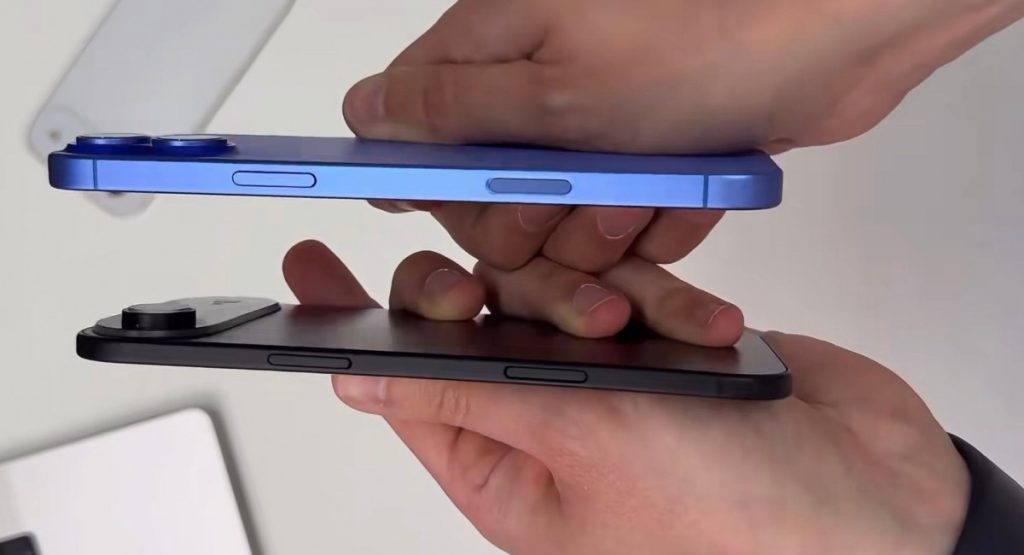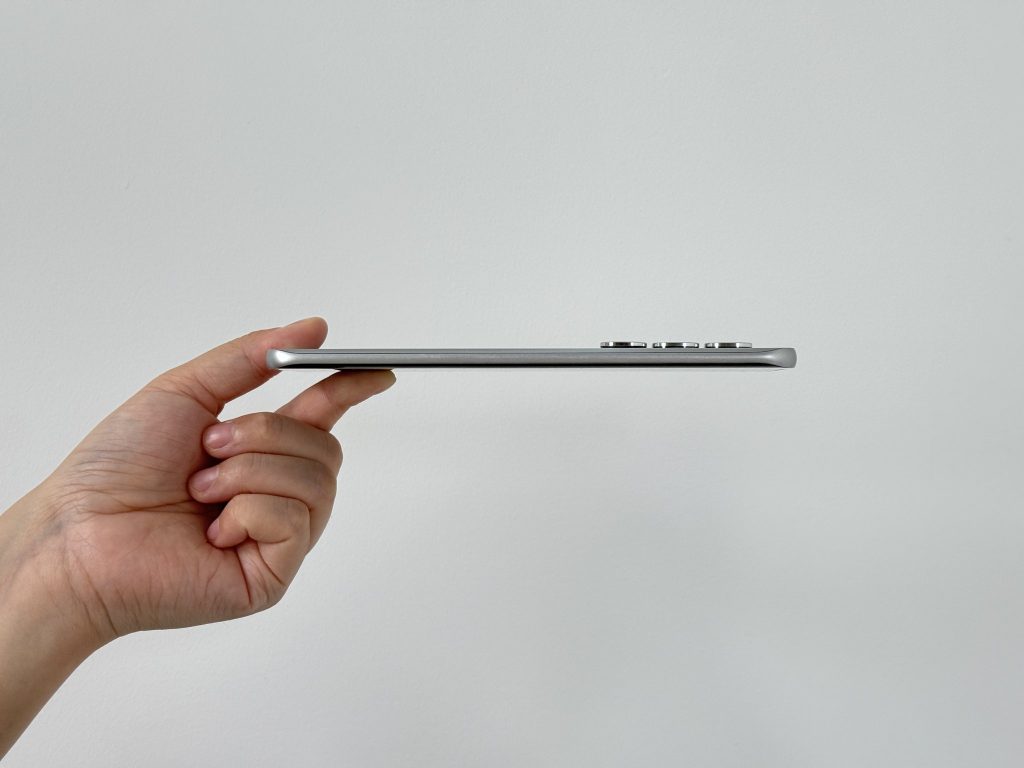NEWS
-
Motorola Razr 60 Debuts in India with Dimensity 7400X, Dual OLED Displays, and 50MP Camera
Motorola launched the Razr 60 flip phone in India on May 28, 2025. It joins the Razr 60 Ultra in the company’s foldable lineup and succeeds the Razr 50.

The Razr 60 features a 3.6-inch pOLED cover display with a 90 Hz refresh rate and a peak brightness of 1,700 nits, protected by Corning Gorilla Glass Victus. The main display is a 6.9-inch LTPO pOLED panel with HDR10+, a 120 Hz refresh rate, and peak brightness up to 3,000 nits, using the same protective glass.
The hinge is titanium-reinforced and rated for over 500,000 folds. The device carries an IP48 rating for dust and water resistance and includes Dolby Atmos stereo speakers with spatial audio support.
>>>New 5000mAh QS50 Replacement Battery for Motorola Moto G Stylus 5G 2024
It is powered by a MediaTek Dimensity 7400X chipset with 8 GB RAM and 256 GB storage. It runs Hello UI based on Android 15, with a software support commitment of three OS upgrades and four years of security updates.
Camera hardware includes a 50 MP main sensor with OIS, a 13 MP ultrawide + macro camera, and a 32 MP front-facing camera.
The phone is equipped with a 4,500 mAh battery, supports 30 W wired charging (charger included), and 15 W wireless charging.
>>>New 3000mAh NTN7143LI Replacement Battery for Motorola MTX838 MTX8000 MTX9000
The Razr 60 is available in three finishes: Pantone Lightest Sky (Pearl Marble), Pantone Gibraltar Sea (Fabric), and Pantone Spring Bud (Premium Vegan Leather). It will go on sale starting June 4 via Flipkart, Reliance Digital, Motorola’s official site, and major retail outlets in India. The price is ₹49,999.
PR -
Apple to Launch Ultra-Light iPhone 17 Air This September
Apple is preparing to launch the iPhone 17 Air this September as the replacement for the iPhone 16 Plus. According to recent reports, the device will weigh between 145g and 150g, making it lighter than Samsung’s Galaxy S25 Edge.

The weight reduction is attributed to the use of 7000 series aluminum for the frame, instead of titanium, resulting in a frame weight of 25–30g. The OLED display weighs about 35g, the single 48MP rear camera adds 5–7g, the A19 chip and logic board together contribute around 10–12g, and the MagSafe module with other electronics also adds 10–12g. The glass back is 15g and the battery is 35g.
>>>New 3110mAh 11.91WH 616-00641 Replacement Battery for Apple iPhone 11
The device is expected to be 5.5mm thin, making it thinner than the Galaxy S25 Edge. Apple is rumored to be using Si/C battery technology to achieve higher energy density, though the capacity is likely under 3,000mAh (most estimates range from 2,800mAh to 2,900mAh). Apple is also expected to offer a battery case as an accessory.
The iPhone 17 Air will reportedly feature a 24MP selfie camera, 8GB RAM, a 120Hz OLED screen with Always-On Display support, Dynamic Island, Face ID, wireless charging, and global eSIM support.
-
Vivo T4 Ultra Set to Launch in India in June with Dimensity 9300+ Chip and AI Features
Vivo is preparing to expand its T4-series in India with the launch of the Vivo T4 Ultra in June, according to a leak from XpertPick.

The T4 Ultra will feature the MediaTek Dimensity 9300+ chipset, marking a major performance upgrade over the T3 Ultra, which used the Dimensity 9200+. The new chip reportedly pushes the device past 2 million points on AnTuTu.
The phone runs FunTouch OS 15, bringing new AI features such as AI Image Studio, AI Erase 2.0, and Live Cutout.
>>>New 5000mAh BA28 Replacement Battery for Vivo T3
Rumored specifications include:
- 6.67-inch OLED display
- 1.5K resolution, 120Hz refresh rate
- Sony IMX921 50MP main camera
- 50MP periscope telephoto camera
- 90W fast charging
- 8GB RAM (per Geekbench listing, model number V2504)
Pricing hasn’t been confirmed, but with the T3 Ultra debuting at ₹31,999, the T4 Ultra is expected to launch in a similar range. Additional specifications remain unconfirmed at this stage.
-
Southwest Airlines Updates In-Flight Policy on Portable Chargers
Starting May 28, Southwest Airlines will implement a new policy requiring passengers to keep portable chargers in plain sight while in use during flights. This includes all battery-powered charging devices, such as power banks and battery cases for phones.

Under the new policy, portable chargers cannot be used while stored in the overhead bin or under the seat. They must remain visible whenever they are actively charging a device. If the portable charger is not in use, it may remain stored in a carry-on bag as usual.
>>>New 3200mAh/46.08Wh C1048A1 Replacement Battery for Xiaomi Vacuum Cleaner 4 wires
Southwest is the first U.S. airline to adopt such a rule. Although the change currently applies only to Southwest, other airlines may follow with similar restrictions.
The policy aligns with growing concerns over lithium-ion battery safety in air travel. According to Federal Aviation Administration (FAA) data, 22 verified incidents involving lithium-ion batteries have occurred so far in 2024. Last year set a record with 89 incidents, and since 2006, a total of 620 incidents have been reported. The most common sources of these incidents are battery packs, vaping devices, and cell phones.
The Transportation Security Administration (TSA) already prohibits lithium batteries—both rechargeable and non-rechargeable—in checked luggage, while permitting them in carry-on bags. With Southwest’s new rule, visible placement during use becomes an additional requirement.
>>>New 5040mAh/57Wh L23M3P71 Replacement Battery for Lenovo ThinkPad L14 Gen 5
Southwest recommends that if passengers observe signs of overheating or fire, they should notify flight attendants immediately. Crew members are trained to respond to lithium battery-related incidents in the cabin.
-
Infinix Prepares Sub-6mm Hot 60 Pro+ with Curved Display

Infinix is reportedly preparing to launch the Hot 60 Pro+, which will have a body under 6mm thick, making it the "thinnest curved screen phone" to date.
According to Ice Universe, the Hot 60 Pro+ is already in production with a 5.95mm profile, surpassing the 5.8mm thickness of the Samsung Galaxy S25 Edge. The phone features a triple camera setup with slightly protruding lenses, though details about the camera specifications have not been revealed.
This push for ultra-thin designs comes as Apple is also rumored to launch the iPhone 17 Air with a 5.5mm body, potentially setting a new benchmark for slim smartphones.
